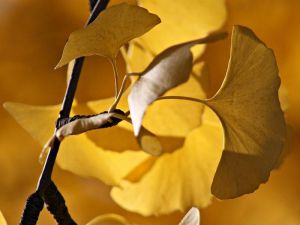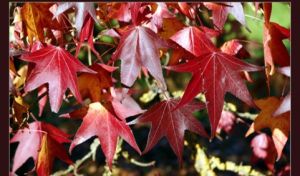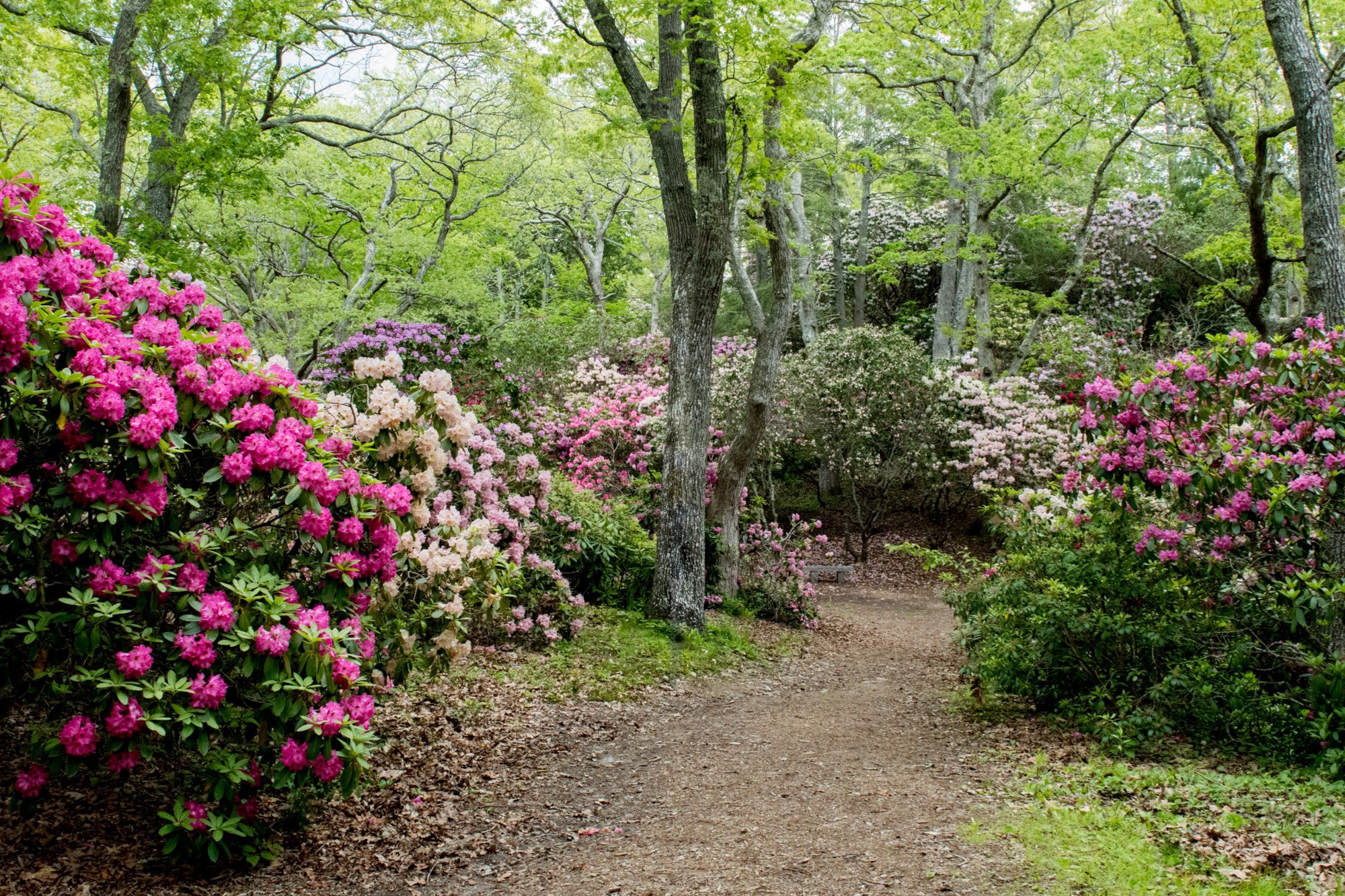Trees, Shrubs and Plants for Fall Color
It’s not hard to notice fall is around the corner. The air is crisp and the trees (and many other plants) are starting their annual journey into dormancy. Along the way we are privileged to witness their spectacular show. Of course I’m speaking of the fall color that many trees, woody shrubs, and even many herbaceous plants provide as they go dormant for the season.
This is truly a magical time of the year. We’re somewhat spoiled in that we really take fall color for granted but this phenomenon only occurs in a narrow temperate part of the world and we’re lucky to live in one of the best placed to witness it. A trip to just about anywhere in New England over the next week or two will provide wondrous colors everywhere.
We all think of trees like Sugar Maple (Acer saccharum) and Red (Swamp) Maple (Acer rubrum) but there are many other species that we can plant that will provide a show. Among them are some of my favorite woody (and herbaceous) plants.
Acer ginnala (actually Acer tataricum subsp. ginnala) is a wonderful small-stature tree to 20-25’ producing deep red fall colors. Dogwoods are always known for their fall show but my favorite species is actually Cornus controversa, the Giant Dogwood. This native species grows to 40-45’ and is spectacular as it turns gold to deep red in late October. The Katsura Tree, Cercidiphyllum japonicum is a rare fall show in that it can be anything from yellow to pink to deep maroon as it goes dormant.
Of the larger shade, or ‘street trees’ are several magnificent specimens including Ginkgo biloba, with its brilliant yellow foliage, and Nyssa sylvatica, or Black Tupelo with its deep red color as it goes dormant. Nyssa is a close relative to the Oaks and is a native species found throughout the area. It also has the ability to tolerate moist soils so it can be used in a low area. It grows to 70-100’ so it can be a wonderful large shade tree. Ginkgo can be a bit wild in habit in youth but eventually fills-in and develops a nice habit as it matures. Another native that I really love is Sweetgum, Liquidambar styraciflua with its deep burgundy red fall color and nice pyramidal growth habit makes a great shade tree. The only drawback is the ‘gumballs’ it produces in late summer.
When thinking about the colors of fall, think about shrubs and herbaceous plants too. Hydrangea macrophylla, the ubiquitous Cape Cod plant actually produces beautiful fall foliage. The ‘antique’ phases of the flowers can be quite nice as well. I’m also a huge fan of Little Bluestem, Schizachyrium scoparium. This plant, and its cultivars, has bluish-green foliage that can turn various shades of maroon to red in the fall when many other perennials are going dormant. ‘The Blues’ is a shorter cultivar growing to 24-36” whereas ‘Blue Heaven’ can grow to 4’. Both are great for the garden.
Enjoy the season!








